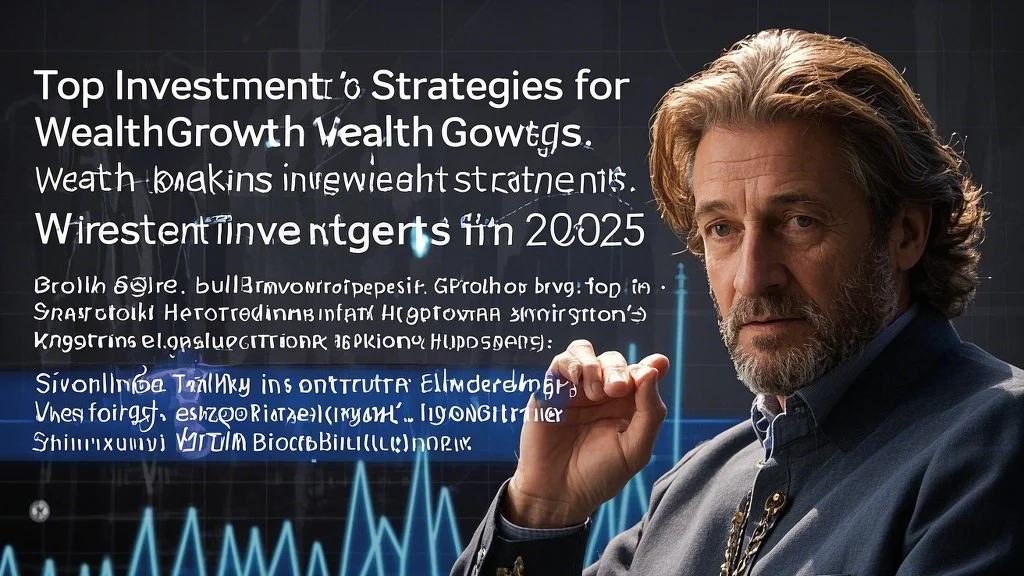Foundational Principles for Sustainable Wealth Growth
Building lasting wealth requires more than just picking hot stocks—it demands a disciplined approach grounded in time-tested wealth growth tips adapted for today’s market realities. The most successful investors understand that true wealth accumulation comes from consistent habits rather than sporadic home runs. Start by establishing your financial baseline: calculate your net worth, analyze cash flow patterns, and set specific targets for different life stages. What separates effective wealth builders from the crowd is their focus on both sides of the balance sheet—growing assets while strategically managing liabilities. In 2025, this means being particularly mindful of interest rate environments when financing investments and understanding how tax law changes might impact different asset classes.
Implementing these wealth growth tips requires adapting to current economic conditions while maintaining long-term perspective. The post-pandemic financial landscape has introduced new variables like supply chain realignments and energy transitions that create both risks and opportunities. Smart investors position their portfolios to benefit from structural shifts like demographic changes (aging populations in developed nations, youth bulges in emerging markets) and technological disruptions (AI implementation across industries). An often-overlooked aspect involves aligning investments with personal competencies—the best returns often come from areas you understand deeply rather than chasing unfamiliar “hot” sectors. Regular portfolio audits (at least annually) help ensure your strategy remains aligned with evolving goals and market conditions.
Selecting Wealth-Building Investments for the New Economy
The 2025 investment landscape presents unique opportunities for those who understand how to identify quality wealth-building investments. While traditional options like index funds remain core holdings, tomorrow’s wealth creators are looking toward assets benefiting from macroeconomic transformations. Infrastructure plays tied to renewable energy transitions and grid modernization offer compelling growth potential with relatively stable cash flows. Specialized REITs focusing on data centers, cell towers, and healthcare facilities combine real estate’s stability with growth sector exposure. What distinguishes truly strategic investments is their ability to compound value through multiple channels—appreciation, cash flow, and tax advantages—rather than relying on a single growth driver.
When evaluating wealth-building investments, focus on companies with durable competitive advantages in growing industries. The rise of artificial intelligence creates opportunities not just in tech firms but across sectors implementing AI to boost productivity. An often-underappreciated strategy involves investing in “picks and shovels” companies that provide essential components or services to booming industries rather than trying to pick the ultimate winners. As global supply chains reconfigure, manufacturers with localized production capabilities and logistics innovators stand to benefit. The most successful investors build “theme baskets” that capture overarching trends through multiple holdings rather than betting heavily on single stocks.
Implementing Smart Investment Strategies for Market Volatility
Navigating 2025’s anticipated market fluctuations requires smart investment strategies that balance growth potential with risk management. Dollar-cost averaging remains a powerful tool, especially when complemented with “value averaging”—adjusting purchase amounts based on market valuations. The core-satellite approach proves particularly effective now: a foundation of low-cost index funds provides stability while targeted allocations to high-conviction ideas offer growth potential. What many investors miss is the importance of tactical asset location—holding specific investments in taxable vs. tax-advantaged accounts based on their tax efficiency can significantly enhance after-tax returns over time.
Advanced smart investment strategies for 2025 incorporate lessons from recent market cycles. Maintaining “dry powder” reserves allows investors to capitalize on volatility rather than fear it. Option strategies like cash-secured puts can generate income while establishing positions at attractive prices. An often-overlooked tactic involves using sector rotation strategies based on macroeconomic indicators rather than trying to time broad market movements. As interest rates stabilize, fixed-income instruments will regain their traditional role in portfolio construction, though duration management becomes crucial. The most sophisticated investors employ hedging techniques not to eliminate risk entirely but to reduce catastrophic downside potential during uncertain periods.

Balancing High-Return Investments With Prudent Risk Management
The pursuit of high-return investments must be tempered with disciplined risk assessment in 2025’s evolving financial landscape. Venture capital and private equity opportunities are becoming more accessible to accredited investors through innovative platforms, offering exposure to growth-stage companies before public listings. Special purpose acquisition companies (SPACs) have evolved from their speculative peak into more structured vehicles for taking promising businesses public. What separates calculated high-growth bets from reckless speculation is thorough due diligence—analyzing management teams, unit economics, and addressable markets with professional rigor.
When evaluating high-return investments, sophisticated investors look for asymmetric risk/reward profiles—opportunities where the upside potential significantly outweighs the possible downside. Emerging markets undergoing structural reforms present such possibilities, particularly in sectors like financial technology and consumer goods. An often-underutilized strategy involves “co-investing” alongside established investment firms in private deals, gaining access to vetted opportunities with professional oversight. As cryptocurrency markets mature, select blockchain infrastructure plays offer growth potential beyond speculative token trading. Regardless of the asset class, successful high-return investors strictly limit position sizes to levels that won’t devastate their portfolios if investments fail.
Capitalizing on Emerging Investment Opportunities
2025 presents unique investment opportunities for investors attuned to technological and societal shifts. The energy transition creates potential in areas beyond solar and wind—energy storage, grid modernization, and critical minerals all play crucial roles. Healthcare innovations like personalized medicine and longevity technologies are reaching inflection points. What makes these opportunities particularly compelling is their global nature; the same trends manifest differently across regions, allowing geographically diversified exposure. Investors willing to explore beyond traditional markets may find value in frontier economies where demographic trends and economic reforms converge favorably.
Identifying promising investment opportunities requires distinguishing between fleeting trends and structural transformations. The electrification of transportation affects industries far beyond automakers—from lithium producers to charging infrastructure operators. An often-overlooked area involves “circular economy” businesses that reduce waste through innovative recycling and product life extension models. As artificial intelligence becomes ubiquitous, look for companies providing essential AI infrastructure rather than just flashy applications. The most successful opportunity-spotters maintain networks with industry professionals to gain early insights about emerging sectors before they become mainstream investment themes.
Constructing a Resilient Growth Portfolio for 2025
Building a portfolio optimized for 2025 conditions requires integrating various wealth growth tips and smart investment strategies into a cohesive plan. Start by determining your true risk capacity—considering not just emotional tolerance for volatility but also your investment timeline and financial flexibility. The classic 60/40 stock/bond allocation may need rethinking in an environment where both assets sometimes move together—alternative diversifiers like managed futures or market-neutral strategies can provide better portfolio balance. What separates cookie-cutter portfolios from truly effective ones is their reflection of personal circumstances—a young entrepreneur’s asset allocation should differ markedly from a retiree’s, even if both seek growth.
Practical portfolio construction for 2025 involves layering core holdings with strategic tilts toward high-conviction themes. Broad market ETFs provide foundation exposure, while select active strategies can capitalize on market inefficiencies in specialized areas. An often-missed opportunity involves using volatility to your advantage—systematic rebalancing forces you to “buy low and sell high” as assets drift from target allocations. As new opportunities emerge, maintain discipline around position sizing and diversification rules. The most successful growth portfolios combine patience with flexibility—sticking to long-term strategies while adapting tactics to changing market conditions.
Risk Management Strategies for Growth Investors
Pursuing high-return investments demands equally sophisticated risk management approaches in 2025’s uncertain environment. Beyond basic diversification, consider correlation patterns—how different holdings interact during various market conditions. Tail risk hedging, using instruments like put options on broad market indexes, can protect against extreme downside events without significantly impacting long-term returns. What many growth-oriented investors overlook is the importance of liquidity management—ensuring sufficient cash or cash equivalents to avoid forced selling during market downturns.
Effective risk management also involves scenario planning—stress-testing your portfolio against various economic outcomes (recession, stagflation, rapid growth). An often-underutilized tactic involves using stop-loss orders on individual equity positions while allowing the overall portfolio strategy to remain intact. As you evaluate investment opportunities, consider both the visible risks and potential black swan events that could disrupt entire sectors. The most resilient growth investors maintain checklists for investment decisions and periodically review past choices to identify recurring mistakes in their decision-making processes.



